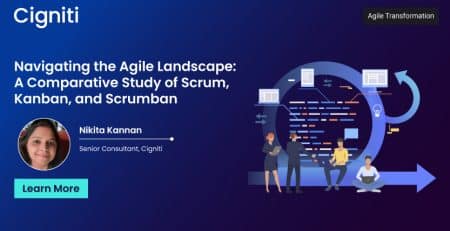Building an Agile PMO: Key Features, Organizational Structures, and Overcoming Challenges
Traditional forms of enterprise project management are constantly evolving as the field matures and expands. Although these ways of thinking have been successful in the past, changes to the ways we work, lightning-fast globalization, and the increased use of Agile across industries require a new way of working.
As a result, structuring an Agile Project Management Office (PMO) is the next logical step. But what is an Agile PMO?
Agile PMO is a modern take on Project Management techniques. Its purpose is to adapt quickly to our changing needs and world in ways a regular PMO simply cannot. Although many of the goals are the same, an Agile PMO makes projects more flexible than traditional methods.
- The biggest differences between a traditional and an Agile PMO include:
- The decentralization of control and planning
- Agile budgeting and resource allocation
A system of workflow checks and balances that streamlines forward movement
Comparison between Agile and Traditional PMO:
| Parameters | Agile Project Management | Traditional Project Management |
| Flexibility and Adaptability | Emphasizes flexibility and adaptability | Emphasizes planning and predictability |
| Project requirements | Prioritizes customer satisfaction and working software | Prioritizes following a strict plan and meeting project requirements |
| Communication | Encourages face-to-face communication and collaboration | Rely on written documentation. Formal communication |
| Project phases and planning | Uses short sprints for planning and delivery. Allows for changes and adjustments throughout the project | Uses longer project phases for planning and delivery. Has a rigid plan that is difficult to change |
| Team Functionality | Cross-functional teams | Functionally divided teams |
| Organization | Self-organizing teams | Hierarchically organized teams |
| Organizational Structure | Linear | Iterative |
| Project Scale | Large-scale | Small and Medium scale |
| Development Model | Life cycle model | Evolutionary delivery model |
| User Requirement | Clearly defined before coding or implementation | Interactive inputs |
Top of Form Bottom of Form
What are the features of an Agile PMO?
A great Agile PMO looks a lot like a traditional PMO with a few key exceptions based on the philosophies of Agile methodology.
Project ranking: Agile PMOs keep a catalog of enterprise projects that are ranked according to the order of importance by predetermined criteria.
Grooming: Backlog grooming in Agile means project organizing and tracking. Among its many benefits, an Agile PMO makes it easy to keep track of all upcoming and active projects in one place (Book of Work).
Team empowerment: Team empowerment means allowing teams to be self-reliant, make their own informed decisions, and remove otherwise time-consuming approval processes. When each team member has complete visibility into project plans and data, they can all take ownership of the project so that there is no need for reporting to a manager each step along the way.
Project filtering: In a traditional PMO, most projects begin without a clear approvals system beyond a simple sign-off. In an Agile PMO, there is a standard qualification filter that puts every new idea through initiation and an approval stage before it gets added to the backlog.
Team communication: In an Agile PMO, teams aren’t determined by the projects. Instead of ending and starting a new group for every new assignment, cross-departmental teams stick together. This may require some additional support from members from time to time, but it’s ultimately more productive than starting from scratch each round.
Measure team velocity: Regular PMOs count hours, while Agile PMOs measure team capacity and what they can complete in each sprint. Not only is it a better estimation of how long certain tasks will take, but it also promotes a more productive way of doing things.
The Organizational Structure of an Agile PMO
Traditional PMOs rely on a top-down approach to their leadership and team organization. The organizational structure of an Agile PMO, on the other hand, is far more circular. At the top of a traditional PMO chain of command are business owners and PMOs. Agile PMOs also place business users at the top, but that’s where the similarities end.
From there, the flow moves to the project team, which includes the product owner, Scrum master, developmental resources, quality assurance resources, and miscellaneous resources. The PMO offers project support and guidance to the Scrum Master, who provides progress updates to the PMO throughout the project lifecycle. Each resource category is owned and managed by the appropriate manager, i.e., the developmental manager oversees developmental resources and so on.
In the organizational structure of an Agile PMO, the PMO plays the role of a consultant and not a manager. This frees the PMO to focus on making each team as efficient as possible. Instead of keeping tabs on basic project characteristics such as budget and time, they can instead focus on offering their insight into creating better systems while teams self-organize.
Because the Agile PMO is no longer the middleman, it’s more important than ever to hire and train collaborative teams. One may even find that a hybrid approach is best for a particular group as the organization makes the transition.
How to Build an Agile PMO
- Create a PMO charter document before starting a Project Management Office that outlines the mission statement, goals, and key performance indicators.
- When an organization develops its processes, it is crucial to document how the organization plans to measure and enhance them over a period.
- Find ways to facilitate building relationships outside of projects with team-building exercises, social events, and dedicated office or networking coffee hours.
- Get crystal clear on how the business defines collaboration and identify if a person possesses that skillset or not when hiring.
- Focus on building and educating the dream team over time as this process puts more responsibility on them than ever before.
- Create high-value rewards for individuals to increase their motivation and creativity.
- Draft minimalist project templates to keep everything uniform but also allow individual teams to put their spin on things as needed.
Common Challenges for Agile PMOs
Inexperienced teams, micromanagement, and adoption struggles are three of the most common challenges for Agile PMOs. Here’s what they are, how to spot them, and what anyone can do to overcome each one.
Inexperienced teams
There are two reasons why that usually happens. First, they could feel that the company culture makes it difficult or even impossible for them to have their voice heard. Second, until a group of people find their rhythm together, it can be a challenge to negotiate the social and professional aspects of the project (both of which are very important in an Agile PMO).
How to overcome it: Set new standards for hiring individuals who are experienced with collaboration. Then, consider the personalities of everyone before grouping them. And finally, work to create a consistently high-quality environment for everyone, especially those who may be part of a marginalized group.
Micromanagement
Traditional PMOs often play the role of both manager and administrator as they assist teams. Micromanaging can look like taking over the duties of a team leader. It can also look like failing to delegate questions or tasks to the team members or not having clear-cut boundaries for one’s role. Contrary to popular belief, micromanaging in project management has less to do with any perceived personality deficiency and more to do with establishing formal lines of leadership and clearly defining project responsibilities from the very beginning.
How to overcome it: An Agile PMO must transition out of the mindset of being a hands-on participant and into being an expert Process Consultant. Teams can and should support in doing so. Make new procedures and chains of command clear at the beginning of every project.
Adoption
It’s no secret that adopting Agile processes can be challenging, especially when teams are used to functioning in a certain way over many years. But for an Agile PMO to be effective, everyone must get on the same page sooner rather than later. If they don’t, it could lead to communication breakdowns that keep Agile PMOs from performing their highest ROI duties and delay progress as teams struggle to work autonomously.
How to overcome it: The right project management tool makes it easy to visualize and understand processes, tasks, and approvals, even for teams with zero experience with Agile.
Conclusion:
In a nutshell, an Agile Project Management Office is a modern take on project management techniques. Its purpose is to adapt quickly to our changing needs and world in ways a regular PMO simply cannot. Although many of the goals are the same, an Agile PMO makes projects more flexible than traditional methods. With the experience of implementing the same with our clients, we can reap the benefits such as the enablement of real-time visibility across the organization, improved communication and accountability, aligning projects with business objectives, business decision-making, and improved effective resource utilization.
At Cigniti, we have a full-bodied PMO whose focus is on faster project turnaround time. They are observant of the specific needs of customers and manage active projects and products needing immediate attention. Cigniti has a very organized Process Asset Library (PAL) that has robust PMO processes, guidelines, and templates, which are utilized extensively in managing the Agile PMO.
Need help? Consult our team of Agile Transformation experts to learn more about building an Agile PMO.




Leave a Reply